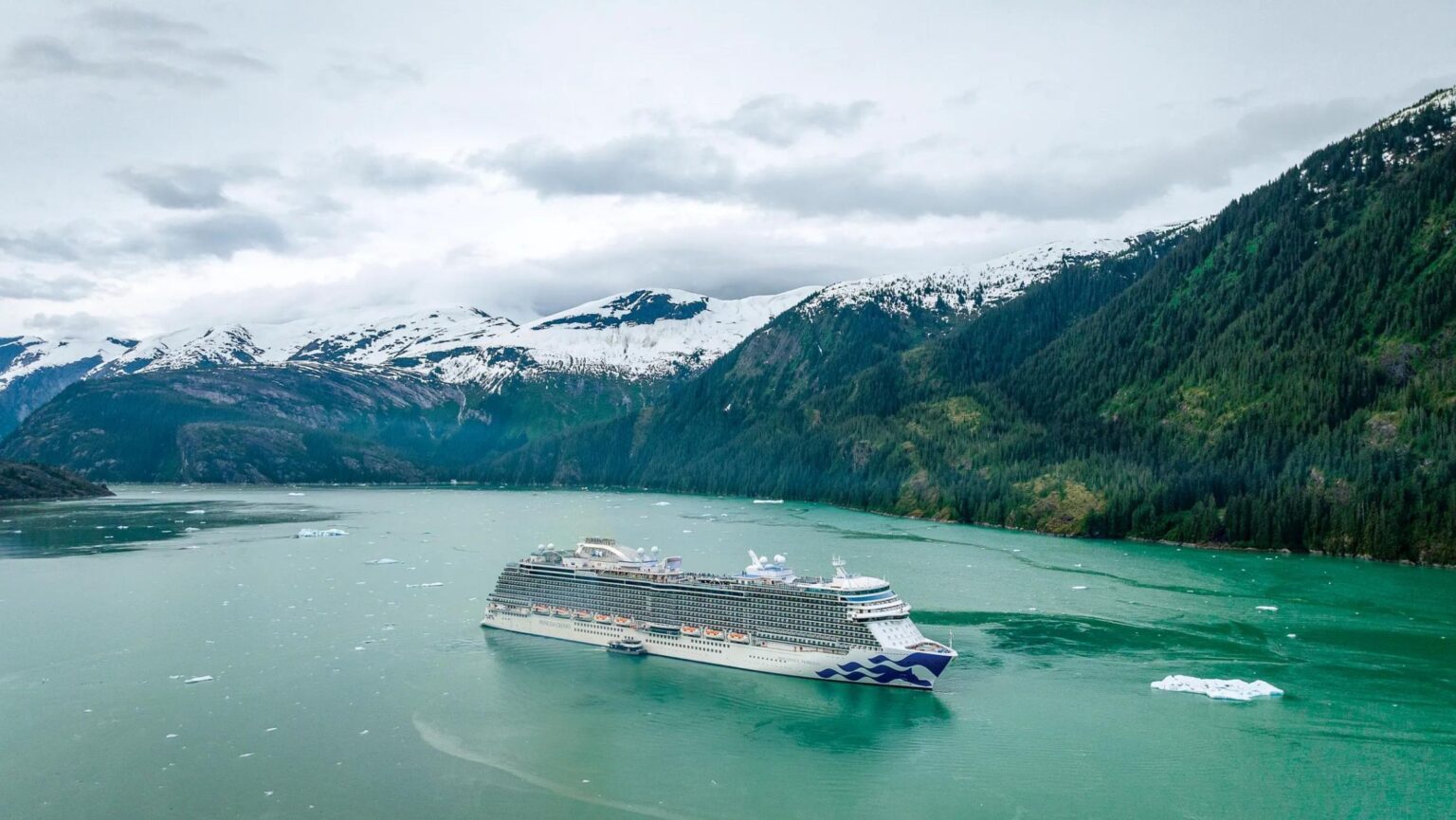The Alaskan wilderness, a pristine expanse of breathtaking natural beauty, appears to be under siege this season. The cruise industry, once a gracious visitor to this majestic landscape, is now threatening to become its greatest threat.
A recent announcement by Princess Cruises, signalling a record number of ships bound for Alaskan waters, has rekindled concerns about whether there needs to be better control over the number of large vessels in the region.
The people of Alaska, weary of the relentless influx of tourists, are reaching their breaking point. Communities like Juneau, where the local population is dwarfed by the influx of cruise passengers during peak season – potentially reaching a staggering 10-to-1 visitor-to-resident ratio – are grappling with the consequences of overtourism. So much so that they are considering drastic measures like limiting cruise ship visits to protect their fragile environment and quality of life.
Princess Cruises is not alone in its pursuit of profits from Alaska’s popularity. Other cruise giants, including Carnival Corporation (which owns Princess, Holland America, and other lines), Royal Caribbean, and Norwegian Cruise Line, are also deploying record numbers of large ships to Alaska. This mass influx of tourists is overwhelming local infrastructure, straining resources, and eroding the very qualities that draw visitors in the first place.
It’s also dangerously close to failing to read the room.
Royal Caribbean, known for its mega-ships and focus on entertainment, is sending Oasis-class ships like the Oasis of the Seas and Allure of the Seas. Norwegian Cruise Line, with its freestyle cruising concept, is also increasing its Alaska presence with ships like the Norwegian Bliss and Norwegian Jewel. Holland America, known for its more traditional cruising experience and with a long history of involvement , is deploying ships like the Nieuw Amsterdam and Eurodam. Additionally, luxury lines such as Regent Seven Seas Cruises, Oceania Cruises, Seabourn, and Silversea are also increasing their Alaskan offerings, with smaller, more upscale vessels.
The projected number of cruise passengers visiting Alaska in the upcoming season is certainly alarming. The Alaska Tourism Industry Association (ATIA) estimates a potential increase of 20-30% in passenger numbers compared to previous years. This surge, coupled with the growing size of cruise ships, is putting unprecedented pressure on the delicate Alaskan ecosystem and the communities that depend on it.
To put these numbers into perspective, in 2019, a record-breaking year for Alaska tourism, over 1.3 million cruise passengers visited the state. With a projected increase of 20-30% for the upcoming season, we could be looking at upwards of 1.6 million cruise passengers in Alaska. This influx represents a significant strain on the state’s resources and infrastructure.
These statistics beg the question: Why has self-regulation within the cruise industry failed so spectacularly? The industry has the opportunity to demonstrate its commitment to sustainable tourism. Instead, it appears to have opted for short-term gain at the expense of long-term sustainability.
Alaska’s natural beauty is a global treasure. It’s time for the cruise industry to step back, listen to the concerns of local communities, and implement meaningful measures to protect this fragile ecosystem. The future of Alaska depends on it.
If the cruise industry were truly committed to destination custodianship, they would get together – perhaps using Cruise Lines International Association – and agree to:
- Limit ship capacity: Impose stricter limits on the size and number of ships allowed in Alaskan waters.
- Invest in shoreside infrastructure: Support the development of sustainable infrastructure in port cities to accommodate increased tourism without overwhelming local resources.
- Implement passenger education programs: Educate passengers about the delicate ecosystem and encourage responsible behaviour.
- Support local businesses: Prioritize partnerships with local businesses and suppliers, ensuring economic benefits are shared equitably.
- Contribute to conservation efforts: Invest in research and conservation projects to protect Alaska’s wildlife and habitat.
The ball is in the cruise industry’s court. Will they continue to ignore the growing outcry and prioritize profits over preservation, or will they finally demonstrate a commitment to responsible tourism? The world – and Europe, where similar battles are occurring – is watching.









The cruise industry is greedy and insatiable. It will not limit ship size or passenger numbers until local governments pass legislation or citizens place issues on the ballot to stop the growth. And then the cruise lines will sue and work Congress with their army of lobbyists. Passengers need to be educated about the true cost of this destructive way of travel and to understand that they, along with every tax-paying American, are paying our tax dollars to support foreign-flagged non-U.S. tax paying corporations that are raking in profits by demanding kickbacks from local merchants and excursion operators and polluting the hell out of Alaskan waters and air because of the heavy diesel fuel the ships burn. The numbers in Juneau were 1.7 million last year. The city has agreed to “limit” ships to 5 enormous mega ships a day (way too many), and to limit passenger numbers. I predict none of the limits will happen. It’s a corrupt industry that is a health and safety risk for communities it visits (does anyone truly believe a town with 30,000 people can respond to a ship disaster?). When residents start posting signage discouraging tourists from visiting maybe they’ll get a clue. But I’m not counting on it.